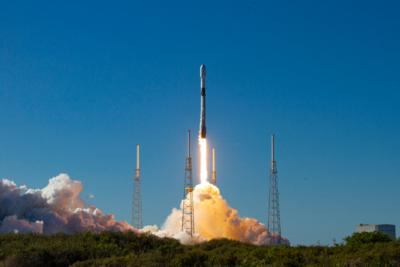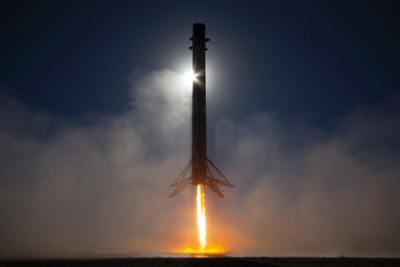Tue, Jan 18, 2022
SpaceX Launch Delivers 44 SuperDove Satellites
Planet, an ecological space surveillance company, has successfully launched their Flock 4X satellite cloud, adding 44 to their fleet of roughly 200 already in orbit. T

he delivery was made in conjunction with SpaceX by sending the new additions aboard a Falcon 9X, bringing its track record with Planet up to 127 satellites across 8 launches. The new mission was the first under a recent multi-year, multiple launch rideshare agreement between the two.
Planet said that contact was quickly made with their satellite cloud additions, establishing connections within minutes. The constellation allows Planet to obtain daily insights about the Earth's resources and global events under the firm's PlanetScope program. The company boasts its fast-paced, rapid construction and just-in-time assembly prior to launch, saying their procedures allow continuous uninterrupted innovation up to the very last moment before shipment to the launch site.
Planet's constellation is one of the largest assemblies of Earth observation satellites in history, bringing in prodigious amounts of medium and high resolution data over the preceding decade. Planet says that 1,700 images for every portion of Earth's landmass have been accumulated, allowing interested customers to see continuous, up-to-date PlanetScope imagery with a solid foundation of prior ground conditions for long term trend analysis.

Planet says that their rapid growth is only possible with recent improvements to the technology in every facet of the space industry. "Over the last 10 years, rocket launches have dropped in price and increased in frequency while satellites have dramatically decreased in size, allowing for greater numbers of satellites to be launched on each rocket. The unprecedented amount of Earth imaging data our entire fleet collects enables global analytics of planetary activity and resources. With Flock 4x, our data products will continue to provide high-cadence Earth insights for governments, NGOs, and companies working in sustainability, disaster relief, financial management, and security," said the company in the days leading up to the launch.
More News
Aero Linx: Model Aeronautical Association of Australia MAAA clubs are about fun flying, camaraderie and community. For over 75 years, the MAAA has been Australia’s largest fl>[...]
Touchdown Zone Lighting Two rows of transverse light bars located symmetrically about the runway centerline normally at 100 foot intervals. The basic system extends 3,000 feet alon>[...]
“Discovery and innovation are central to our mission at Virgin Galactic. We’re excited to build on our successful record of facilitating scientific experiments in subor>[...]
How To Get A Story On Aero-TV News/Feature Programming How do I submit a story idea or lead to Aero-TV? If you would like to submit a story idea or lead, please contact Jim Campbel>[...]
Student Pilot Reported That During Rotation, “All Of A Sudden The Back Of The Plane Kicked To The Right..." Analysis: The student pilot reported that during rotation, “>[...]
 ANN's Daily Aero-Linx (05.02.24)
ANN's Daily Aero-Linx (05.02.24) ANN's Daily Aero-Term (05.02.24): Touchdown Zone Lighting
ANN's Daily Aero-Term (05.02.24): Touchdown Zone Lighting Aero-News: Quote of the Day (05.02.24)
Aero-News: Quote of the Day (05.02.24) ANN FAQ: Contributing To Aero-TV
ANN FAQ: Contributing To Aero-TV NTSB Final Report: Cirrus Design Corp SR20
NTSB Final Report: Cirrus Design Corp SR20




